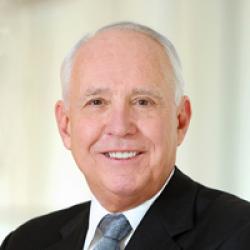We are in the midst of a troubling shift in health care economics. The Centers for Medicare and Medicaid Services (CMS) forecast that spending for retail prescription drugs will become the fastest growing health care expense in the United States and outpace spending growth for all other medical and health care segments over the next decade. Yes, more than hospital care or physician and clinical services.
The skyrocketing cost of pharmaceuticals is deeply concerning. One in four people taking prescription drugs reported difficulty affording their medication. In addition, CMS projects that Americans’ spending on prescription drugs will grow 6.3% each year through 2026. That hike will far exceed the rate of inflation and the growth of family income.
Once, few of us thought about the affordability of a medication when we wrote a prescription. It is distressing to realize that today, cost may be a key factor in whether patients will even fill their prescriptions.
Last December, the National Academies of Sciences, Engineering, and Medicine issued a report showing that retail prescription drug spending in the United States increased from $91 in 1960 to $1,019 in 2016 per person, more than an elevenfold increase after adjusting for inflation. And did you know that most cancer drugs launched between 2009-14 were priced at more than $100,000 per patient for one year of treatment? More recently, that figure shot up to $400,000 for a year of treatment.
I encourage more hospitals to share examples of successful efforts in their communities made possible through 340B support.
I don’t need to tell you that this is a looming crisis. There has been one fortunate program, however, that allows many of our hospitals to help address rising prescription drug prices for vulnerable patients while at the same time providing access to other critical health care services.
The 340B Drug Pricing Program was created by Congress in 1992. The program supports safety-net hospitals — including many of our members — and other providers treating a high percentage of uninsured and underinsured patients.
The program allows participating hospitals to purchase outpatient drugs at a discount from drug manufacturers to help stretch scarce resources. In turn, those savings enable hospitals to expand or provide additional health care services in the community for people in need, including offering low-income patients access to free or substantially discounted prescription drugs.
I know from visiting our 340B hospitals around the country that the program has enabled them to increase health care access to the most vulnerable patients as well as support vital, much-needed preventive services. By all measures, their communities have been uniformly grateful for programs such as:
- Free vaccinations
- Neighborhood clinics in underserved areas
- Smoking cessation programs
- Multidisciplinary clinics to treat substance use and mental health disorders
- Mobile clinics staffed by bilingual health practitioners and social workers that provide free care to children and their families.
All of this is possible at no cost to taxpayers and for only a small cost to pharmaceutical companies. In fact, 340B savings represent less than 4% of the $457 billion in total U.S. drug sales and less than 2% of drug manufacturer revenues. This means that pharmaceutical companies can still maintain healthy profit margins while participating in the program.
The impact of 340B has been far-reaching and incredibly positive. Yet, despite the high value and limited cost, this important program has recently come under attack. In response, over the last year, Congressional committees have held hearings on the 340B program to probe how hospitals are using their savings.
In response, many teaching hospitals have helped Congress better understand the value of the program by sharing examples of how they have used their 340B savings to improve the health of their local communities. This transparency will strengthen the program. The AAMC encourages all program participants to do the same and recently endorsed the “340B Hospital Commitment to Good Stewardship Principles” created by the American Hospital Association.
These stewardship guidelines are an opportunity for hospitals to tell their stories and show the public the powerful impact that the 340B program has on improving and expanding the delivery of essential, life-saving health care services. I encourage more hospitals to share examples of successful efforts in their communities made possible through 340B support.
If policymakers want to address the high cost of prescription drugs, they should not penalize providers that help their communities through the 340B program.
As a nation, we must address the massive impact of soaring drug prices on the health care system. Steep medication prices are putting pressure on the ability of patients to address their fundamental health care needs. Ultimately, this affects the health of Americans.
We appreciate that the current administration is considering proposals to relieve the burden of costly drugs for patients who cannot afford them. However, some of these policies include attempts to scale back the 340B Drug Pricing Program. That would only worsen the problem.
If policymakers want to address the high cost of prescription drugs, they should not penalize providers that help their communities through the 340B program. Our vulnerable patients deserve better.

